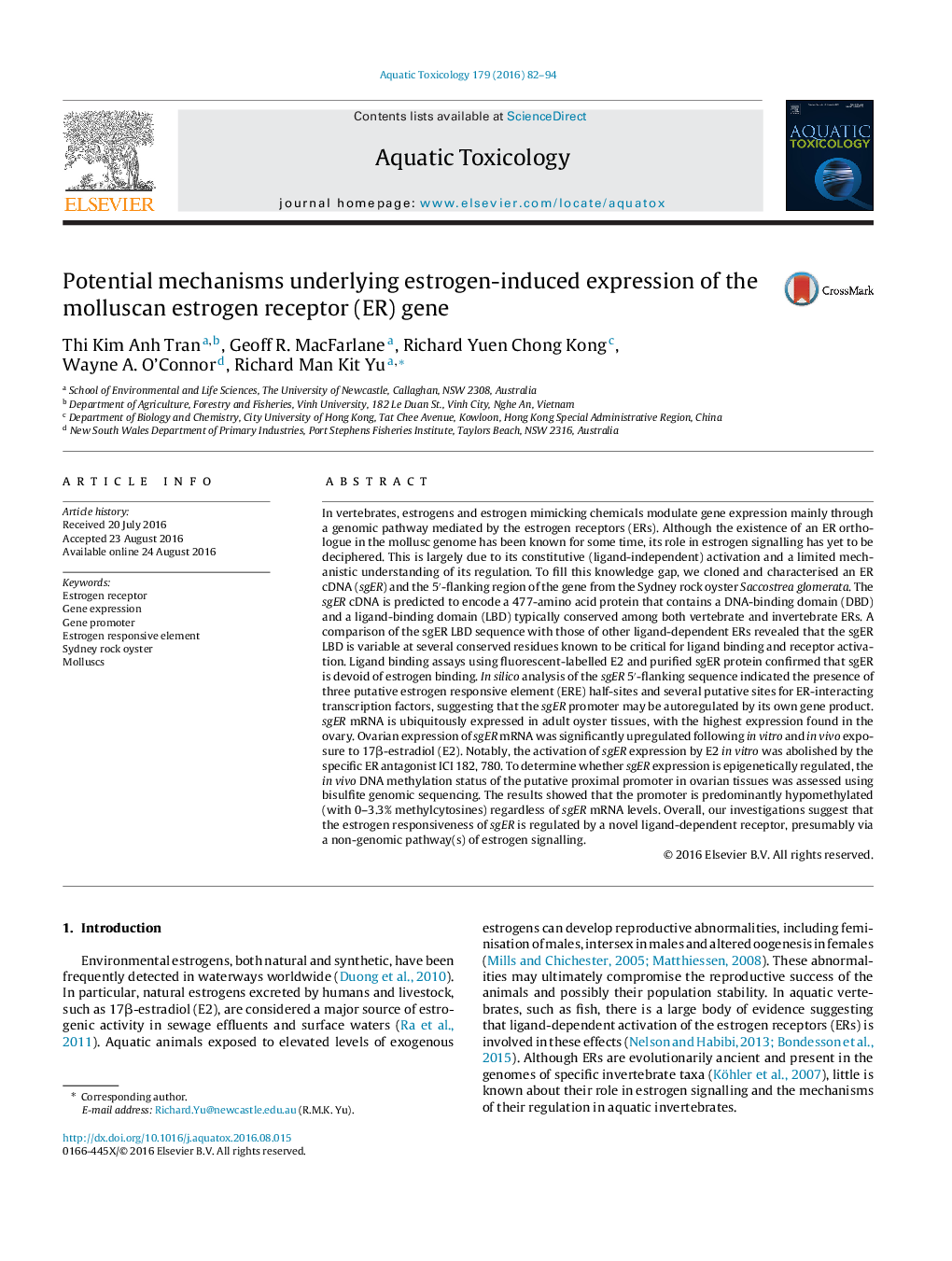| کد مقاله | کد نشریه | سال انتشار | مقاله انگلیسی | نسخه تمام متن |
|---|---|---|---|---|
| 4528893 | 1625926 | 2016 | 13 صفحه PDF | دانلود رایگان |

• This is the first report on the putative promoter sequence of a molluscan ER gene.
• The gene promoter contains putative binding sites for direct and indirect interaction with ER.
• E2 upregulates ER gene expression in the ovary in vitro and in vivo.
• E2-induced gene expression may require a novel ligand-dependent receptor.
• The ER proximal promoter is hypomethylated regardless of gene expression levels.
In vertebrates, estrogens and estrogen mimicking chemicals modulate gene expression mainly through a genomic pathway mediated by the estrogen receptors (ERs). Although the existence of an ER orthologue in the mollusc genome has been known for some time, its role in estrogen signalling has yet to be deciphered. This is largely due to its constitutive (ligand-independent) activation and a limited mechanistic understanding of its regulation. To fill this knowledge gap, we cloned and characterised an ER cDNA (sgER) and the 5′-flanking region of the gene from the Sydney rock oyster Saccostrea glomerata. The sgER cDNA is predicted to encode a 477-amino acid protein that contains a DNA-binding domain (DBD) and a ligand-binding domain (LBD) typically conserved among both vertebrate and invertebrate ERs. A comparison of the sgER LBD sequence with those of other ligand-dependent ERs revealed that the sgER LBD is variable at several conserved residues known to be critical for ligand binding and receptor activation. Ligand binding assays using fluorescent-labelled E2 and purified sgER protein confirmed that sgER is devoid of estrogen binding. In silico analysis of the sgER 5′-flanking sequence indicated the presence of three putative estrogen responsive element (ERE) half-sites and several putative sites for ER-interacting transcription factors, suggesting that the sgER promoter may be autoregulated by its own gene product. sgER mRNA is ubiquitously expressed in adult oyster tissues, with the highest expression found in the ovary. Ovarian expression of sgER mRNA was significantly upregulated following in vitro and in vivo exposure to 17β-estradiol (E2). Notably, the activation of sgER expression by E2 in vitro was abolished by the specific ER antagonist ICI 182, 780. To determine whether sgER expression is epigenetically regulated, the in vivo DNA methylation status of the putative proximal promoter in ovarian tissues was assessed using bisulfite genomic sequencing. The results showed that the promoter is predominantly hypomethylated (with 0–3.3% methylcytosines) regardless of sgER mRNA levels. Overall, our investigations suggest that the estrogen responsiveness of sgER is regulated by a novel ligand-dependent receptor, presumably via a non-genomic pathway(s) of estrogen signalling.
Journal: Aquatic Toxicology - Volume 179, October 2016, Pages 82–94